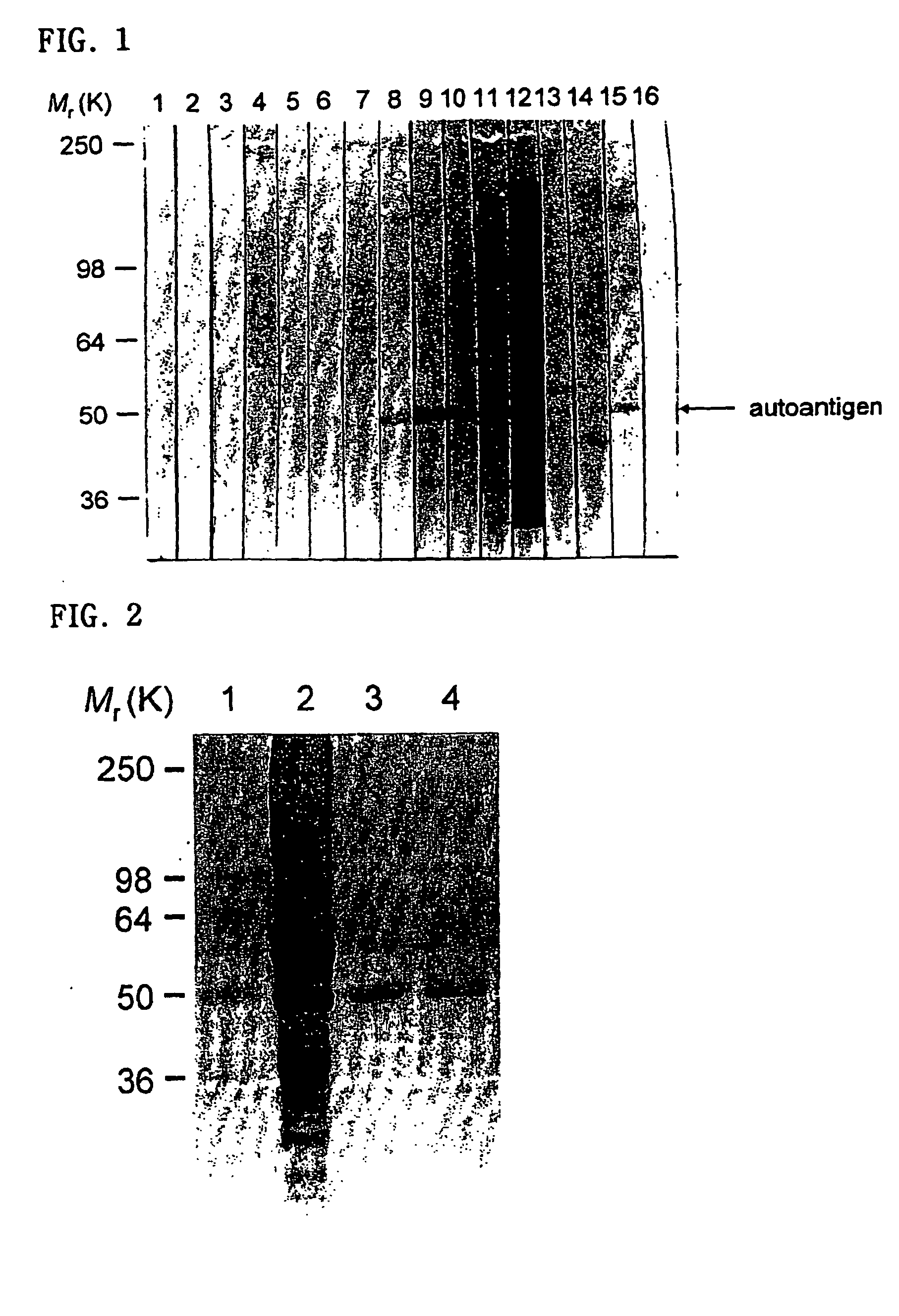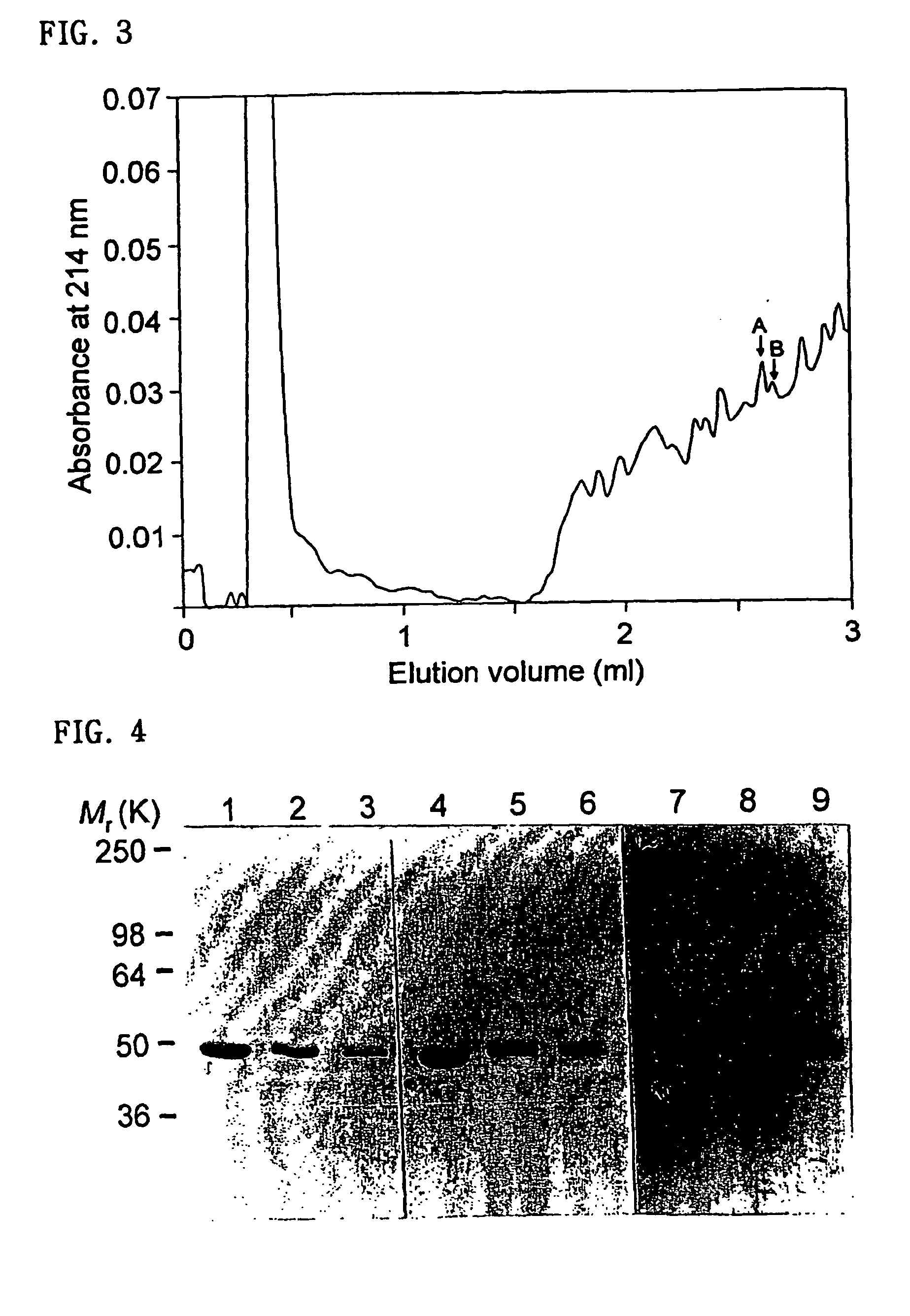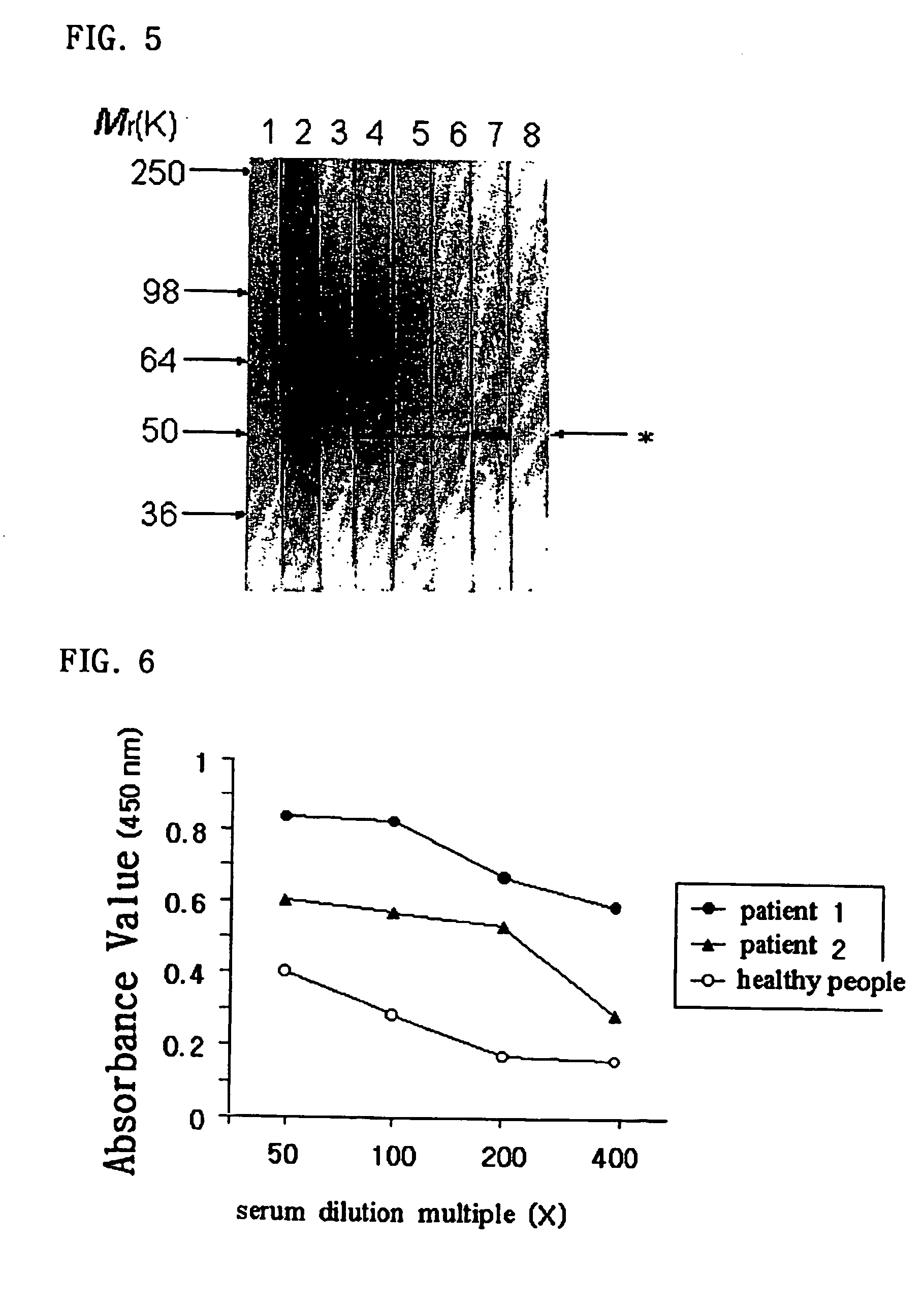Detection of autoantibodies to cytokeratin 18 protein in patients with bronchial asthma and chronic rhinitis, and its applications including a kit for diagnosing bronchial asthma and chronic rhinitis comprising mammalian cytokeratin 18 protein
a technology of cytokeratin 18 and autoantibodies, which is applied in the field of diagnostic kits, can solve the problems of inability to diagnose bronchial asthma by examining the allergic reaction to environmental allergens, inability to explain the mechanism responsible for the development of airway inflammation in patients with nonallergic asthma and rhinitis, and inability to detect the allergen in a significant proportion
- Summary
- Abstract
- Description
- Claims
- Application Information
AI Technical Summary
Benefits of technology
Problems solved by technology
Method used
Image
Examples
embodiment 1
Detection of IgG and IgA autoantibodies to cytokeratin 18 in serum samples from patients with bronchial asthma and chronic rhinitis by immunoblot analysis
[0076] Whole cell extract from human airway epithelial cells (A549 cell) or purified human cytokeratin 18 protein was separated by SDS-PAGE (4% stacking gel and 8% running gel), and the protein was transferred onto the PVDF membrane. The PVDF membrane was incubated with TBS containing 5% nonfat dried milk and 0.05% Tween 20 (blocking buffer) for 1 hour to prevent nonspecific protein bindings to the PVDF, then the membrane was made to 4 mm-wide strips. The PVDF strips were incubated with serum samples diluted 1:100 in blocking buffer for 2 hours at room temperature. After washing, the PVDF strips were incubated with alkaline phosphatase-conjugated goat anti-human IgG or anti-human IgA antibodies for 2 hours. After washing, the PVDF strips were stained with BCIP / NBT substrate solution for 5 minutes. As a positive control, one PVDF st...
embodiment 2
Detection of IgG autoantibodies to cytokeratin 18 in serum samples from patients with bronchial asthma and chronic rhinitis by enzyme-linked immunosorbent assay (ELISA).
[0081] Microtiter plates were coated with purified human cytokeratin 18 protein at a concentration of 0.5 μg per well in 0.1 M carbonate buffer (pH 9.6) for 16 hours at 4° C. After washing 3 times with phosphate buffered saline containing 0.05% Tween-20 (PBST), wells were incubated with 350 μl of PBST containing 3% fetal bovine serum for 1 hour at room temperature. After washing 3 times with PBST, wells were incubated with 100 μl of quadruplicated serum samples diluted in PBST containing 3% fetal bovine serum for 2 hours. After washing 3 times, wells were incubated with peroxidase-conjugated goat anti-human IgG antibodies (Sigma) for 2 hours. After washing 3 times, 100 μl of the TMB substrate solution (Sigma) was added to each well. After 10 minutes, the reaction was stopped by adding 100 μl of 2.5 N H2SO4 to each we...
embodiment 3
Method to prescribe treatment for bronchial asthma by detection of IgG autoantibodies to cytokeratin 18 in the serum samples
[0082] Although several non-steroidal immunomodulatory drugs such as intravenous immunoglobulin, cyclosporine, gold, methotrexate, and hydroxychloroquine have been reported to be beneficial to severe asthmatic patients, their use in asthma remains complicated because of highly variable effects in individual patients and the absence of a marker predicting responsiveness to such treatments.
[0083] Here, the present invention shows a method to prescribe intravenous immunoglobulin for patients with severe asthma on the basis of detection of IgG autoantibodies to cytokeratin 18 in the serum samples.
[0084] Two adult patients with nonallergic asthma and rhinitis were admitted to the hospital due to severe aggravation of their asthmatic symptoms. The two patients received standard therapy for exacerbation of asthma including high dose intravenous corticosteroid therap...
PUM
| Property | Measurement | Unit |
|---|---|---|
| wheal diameter | aaaaa | aaaaa |
| pH | aaaaa | aaaaa |
| pH | aaaaa | aaaaa |
Abstract
Description
Claims
Application Information
 Login to View More
Login to View More - R&D
- Intellectual Property
- Life Sciences
- Materials
- Tech Scout
- Unparalleled Data Quality
- Higher Quality Content
- 60% Fewer Hallucinations
Browse by: Latest US Patents, China's latest patents, Technical Efficacy Thesaurus, Application Domain, Technology Topic, Popular Technical Reports.
© 2025 PatSnap. All rights reserved.Legal|Privacy policy|Modern Slavery Act Transparency Statement|Sitemap|About US| Contact US: help@patsnap.com



